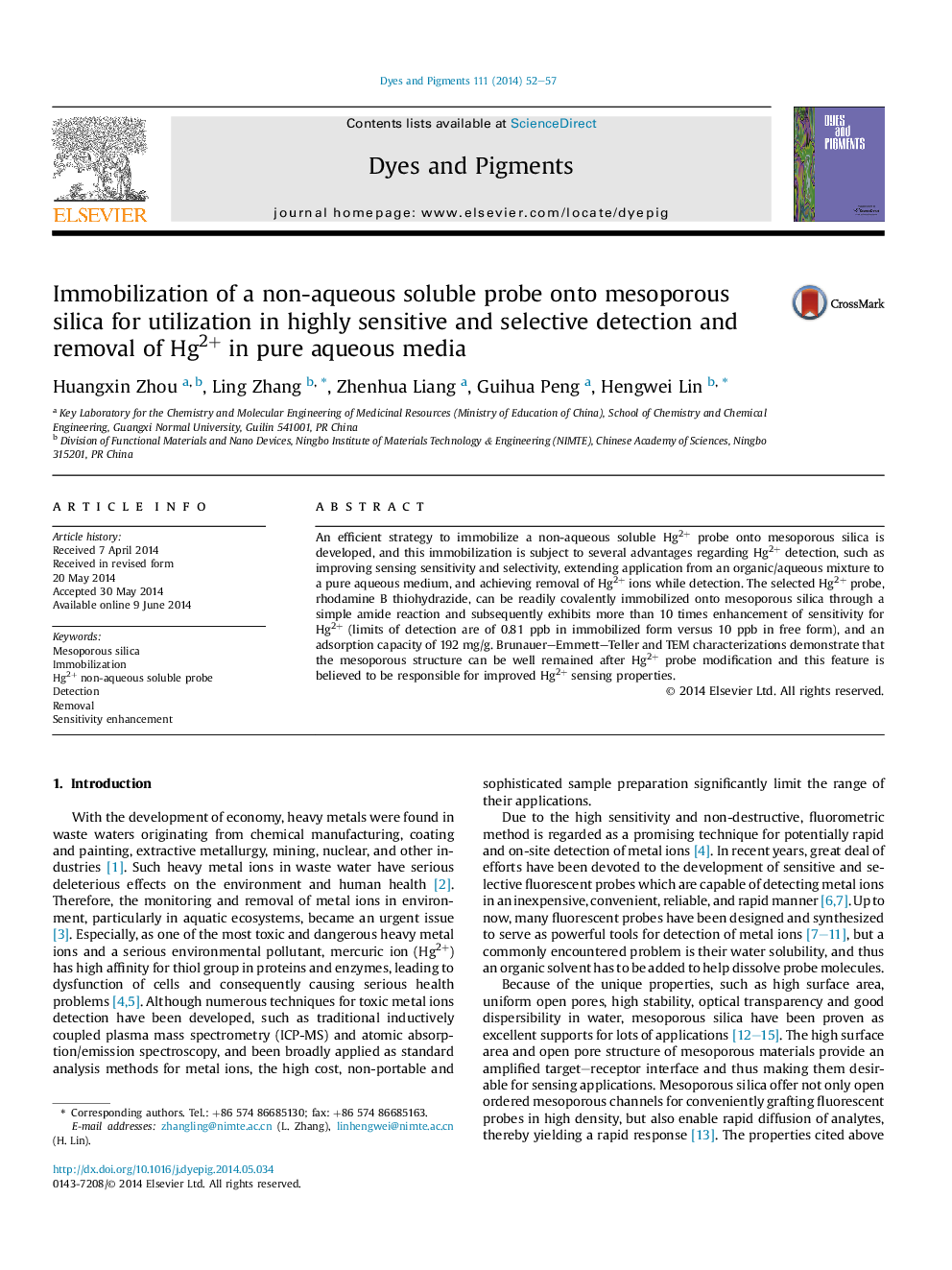| کد مقاله | کد نشریه | سال انتشار | مقاله انگلیسی | نسخه تمام متن |
|---|---|---|---|---|
| 175905 | 458927 | 2014 | 6 صفحه PDF | دانلود رایگان |

• Immobilization of a non-aqueous soluble Hg2+ probe onto mesoporous silica was achieved.
• The immobilized probe exhibited enhanced sensitivity and selectivity for Hg2+ detection.
• Immobilization of a non-aqueous soluble probe onto mesoporous silica can extend its application to pure aqueous media.
• The as-prepared material exhibits a high adsorption capacity for Hg2+.
• The developed method may be readily extended to other sensing systems.
An efficient strategy to immobilize a non-aqueous soluble Hg2+ probe onto mesoporous silica is developed, and this immobilization is subject to several advantages regarding Hg2+ detection, such as improving sensing sensitivity and selectivity, extending application from an organic/aqueous mixture to a pure aqueous medium, and achieving removal of Hg2+ ions while detection. The selected Hg2+ probe, rhodamine B thiohydrazide, can be readily covalently immobilized onto mesoporous silica through a simple amide reaction and subsequently exhibits more than 10 times enhancement of sensitivity for Hg2+ (limits of detection are of 0.81 ppb in immobilized form versus 10 ppb in free form), and an adsorption capacity of 192 mg/g. Brunauer–Emmett–Teller and TEM characterizations demonstrate that the mesoporous structure can be well remained after Hg2+ probe modification and this feature is believed to be responsible for improved Hg2+ sensing properties.
Immobilization of a non-aqueous soluble Hg2+ probe onto mesoporous silica SBA-15 was developed, which exhibited improved sensing performance for Hg2+ than that of the free form in solution and expanded its applicability in pure water. Meanwhile, the modified SBA-15 showed high adsorption capacity for Hg2+ as well.Figure optionsDownload as PowerPoint slide
Journal: Dyes and Pigments - Volume 111, December 2014, Pages 52–57